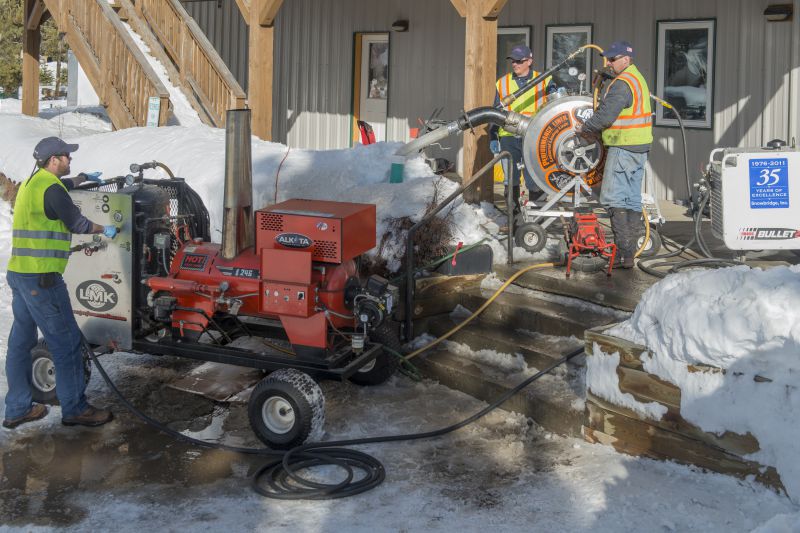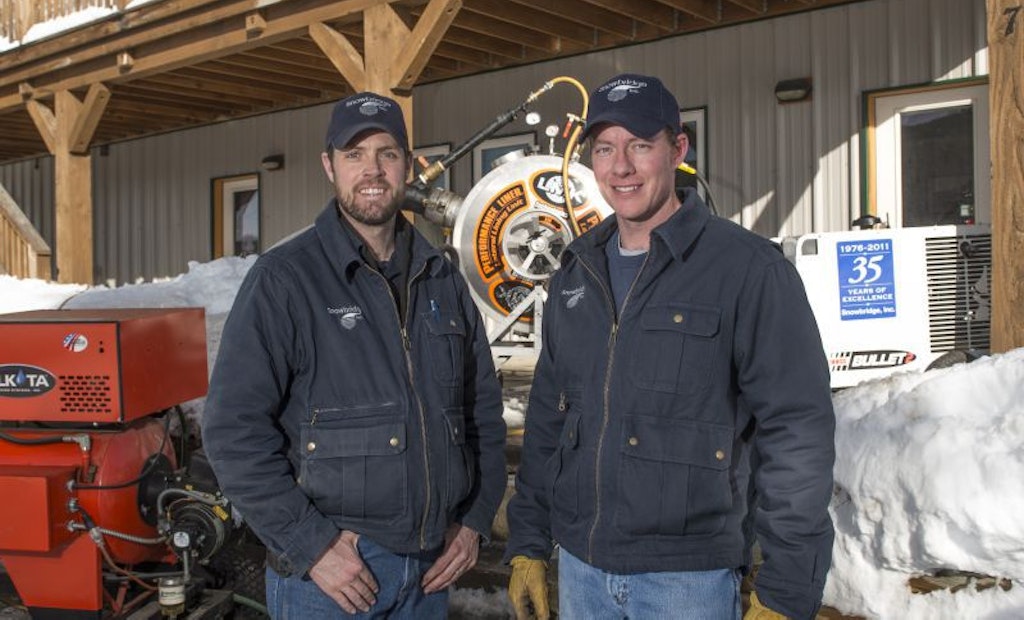Interested in Municipal/Industrial?
Get Municipal/Industrial articles, news and videos right in your inbox! Sign up now.
Municipal/Industrial + Get AlertsEvery drain cleaner faces obstacles of one kind or another on a daily basis. But employees at Snowbridge Inc., based in Breckenridge, Colorado, encounter some unusually challenging situations based on the area’s topography and geography.
Take the brutally cold winters, for instance. Breckenridge and surrounding service areas sit an average of 9,500 to 10,000 feet above sea level, and temperatures often dip to 10 or 20 degrees below zero. That creates steady work thawing frozen pipelines in winter. Toughest job ever? Clearing out about 1,200 feet of a sanitation district’s frozen 4-inch force main that runs between a treatment plant and a lift station. That job took about four days, doing 400- and 500-foot runs with a water jetter mounted inside a heated and insulated jetter truck built by US Jetting.
Frequent snowfalls also make winter driving a risky proposition, especially in high mountain passes. But environmentally, the hardest thing to deal with is the cold weather, says company president and co-owner Bill Tatro. “All our equipment is designed to suck water into it or shoot water out of it, so when hoses freeze, it makes things difficult,” he says.
The high altitude creates operational problems, too, because the thin air robs power from truck engines, pumps and the like. “In general, everything we use has to be a little bit bigger and possess a little bit more horsepower than what you’d run at lower elevations,” he says, noting that Snowbridge’s vacuum trucks are equipped with 400 cfm pumps. “Diesel engines must be turbocharged or they don’t work well.”
A vacuum-truck blower that pulls 27 inches Hg at sea level pulls only about 16 or 17 inches at high elevations, and a traditional vane pump generates about 30 to 40 percent less vacuum power, explains Chris Tatro, vice-president and co-owner. That makes some pumping operations pretty interesting.
“You have to keep in mind that sometimes we’re up at 12,000 feet, pumping grease traps and septic systems at resorts, as well as pumping out outhouses for ski resorts and the U.S. Forest Service,” he says. “At times, we may have to use 90 feet of hose, which makes it even tougher. Or a tank we’re pumping out might be located 30 or 40 feet below the truck.”
To counteract the reduction in vacuum power created by longer, uphill hose runs, crews use a pressure-lift device called the Power Booster, made by Pressure Lift Corp. Typically placed between the first and second sections of hose, it acts like an air pump, generally adding supplemental vacuum power of about 20 cfm at 90 psi, Chris says.







